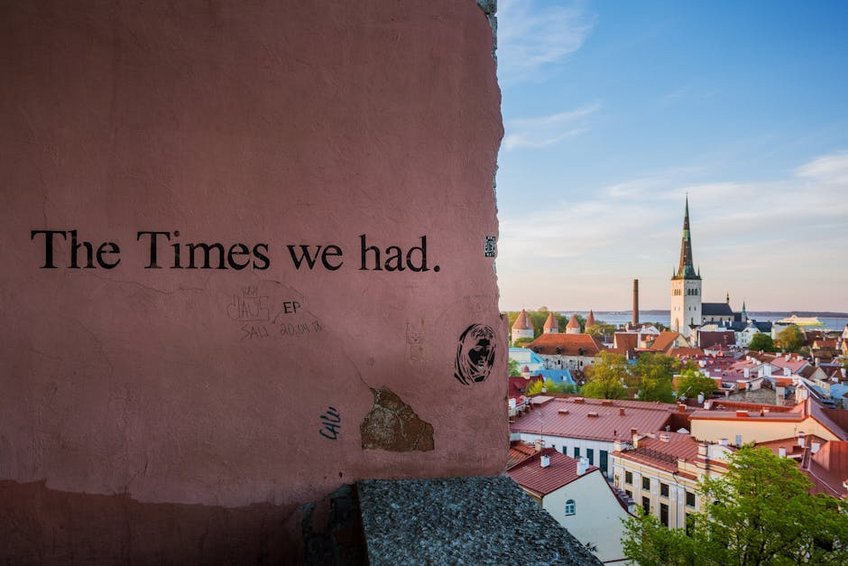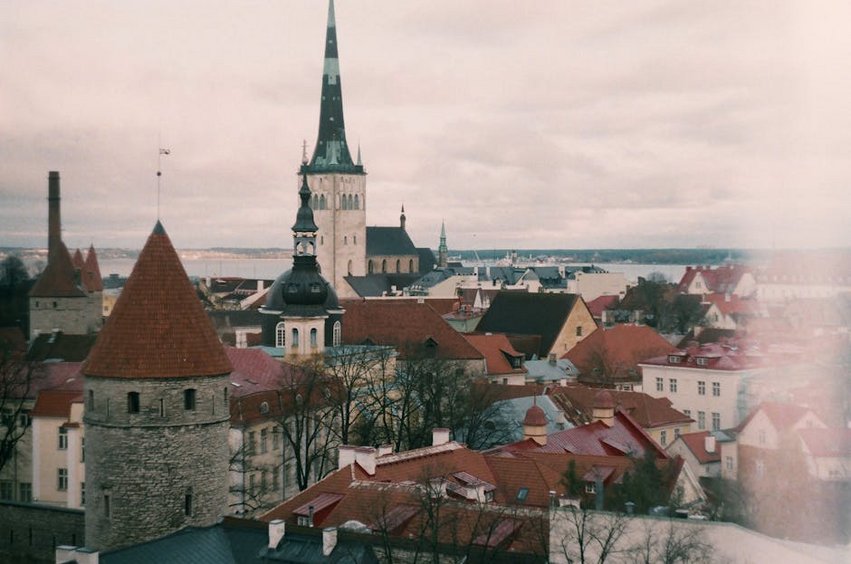Discover the Enchanting Estonia Tallinn Medieval Walls
Exploring the Estonia Tallinn Medieval Walls feels like stepping into a living history book, where centuries-old stone fortifications whisper tales of Hanseatic merchants and medieval knights. These remarkably preserved walls, stretching over 1.9 kilometers and dotted with 26 defensive towers, encircle Tallinn’s UNESCO-listed Old Town, offering you an immersive journey into Estonia’s rich past. As you walk along the ancient ramparts, you’ll encounter panoramic views of red-tiled roofs, Gothic spires, and the Baltic Sea, creating unforgettable photo opportunities. The Estonia Tallinn Medieval Walls represent one of Europe’s best-preserved medieval defense systems, dating back to the 13th century, and provide a unique backdrop for cultural exploration. Whether you’re a history buff, architecture lover, or simply seeking authentic European experiences, these walls deliver captivating insights into medieval life while blending seamlessly with modern Tallinn’s vibrant atmosphere.
Estonia Tallinn Medieval Walls Essential Information
Understanding the Estonia Tallinn Medieval Walls begins with appreciating their architectural significance and historical context. Originally constructed between the 13th and 16th centuries, these defensive structures protected the city from invaders while facilitating trade along the Baltic Sea. The walls feature distinctive characteristics like the “kicking tower” design, where lower sections slope outward to deflect cannonballs, and the iconic fat Margaret cannon tower that now houses the Maritime Museum. You can access various sections through multiple gates, with the Viru Gates serving as the most photographed entrance, flanked by twin ivy-covered towers. Preservation efforts have maintained approximately 80% of the original structure, allowing you to experience authentic medieval craftsmanship while enjoying modern safety features like restored walkways and informative signage throughout your visit.
What Are the Tallinn Medieval Walls? – Structural Overview
- The walls stretch 1.9 kilometers around Tallinn’s Old Town, standing up to 16 meters high and 3 meters thick in sections, with 20 towers still standing from the original 46.
- Key defensive features include arrow slits, cannon ports, and wall walks that allowed guards to patrol the entire perimeter, with some sections accessible to visitors today.
- Construction occurred in phases using local limestone and brick, with the oldest sections dating to 1265 and later expansions reflecting Gothic architectural influences.
- Budget option: Free walking along exterior wall paths, combined with discounted Tallinn Card for $30-40 USD providing access to multiple towers and museums.
- Mid-range option: Guided wall walks for $15-25 USD per person, plus tower admissions at $5-8 USD each, totaling $40-60 USD for comprehensive experience.
- Luxury option: Private medieval tours with historian guides for $80-120 USD, including special access to restricted areas and gourmet meals in tower restaurants.
- Official Estonian Tourism Board
- Lonely Planet Tallinn Guide
Historical Significance – Centuries of Protection
These medieval walls witnessed Tallinn’s transformation from a Danish trading post to a Hanseatic League powerhouse, surviving numerous sieges while protecting the city’s wealth. The防御 structures played crucial roles during the Livonian War and Northern Wars, with some towers like Kiek in de Kök showing cannonball damage from 1577. UNESCO designated the entire Old Town, including the walls, as a World Heritage Site in 1997, recognizing their outstanding preservation and historical value. You’ll discover how the walls shaped Tallinn’s development, with different towers serving as prisons, storage facilities, and residential spaces over the centuries, creating layered historical narratives.

Estonia Tallinn Medieval Walls Planning Your Trip
Planning your visit to the Estonia Tallinn Medieval Walls requires considering seasonal variations, budget constraints, and personal interests to maximize your experience. Tallinn’s compact Old Town means you can explore most wall sections on foot within a single day, though spreading visits across two days allows deeper immersion. You’ll find that spring and autumn offer ideal conditions with moderate crowds and pleasant weather for walking the ramparts. Budget approximately $20-50 USD per person for wall-related activities, including tower admissions and guided tours, with additional costs for transportation and meals. Advance booking isn’t usually necessary for general access, but popular towers like Maiden Tower benefit from reservations during peak seasons. Remember that the walls represent outdoor attractions, so weather-appropriate clothing and comfortable walking shoes are essential for enjoyable exploration.
Best Time to Visit Tallinn Medieval Walls
June through August delivers warm temperatures around 18-22°C (64-72°F) and extended daylight hours, perfect for photography but attracting larger crowds. Shoulder seasons in May and September provide cooler conditions around 12-16°C (54-61°F) with fewer visitors, while winter months from December to February create magical snowy landscapes but require warm clothing and checking for seasonal closures. Summer festivals sometimes incorporate the walls as venues, adding cultural dimensions to your visit, while Christmas markets transform the area into festive wonderlands. For optimal photography conditions, visit during golden hour when the setting sun casts warm light on the ancient stones, creating dramatic shadows and highlights.
Budget Planning and Costs
Essential Preparation Checklist
Pack comfortable walking shoes with good grip for uneven stone surfaces and potentially slippery conditions during rainy weather. Bring layered clothing suitable for Baltic climate changes, including waterproof jackets for sudden showers and warm layers for cooler evenings. Ensure your smartphone has offline maps downloaded since GPS signals can be weak near thick stone walls, and consider bringing portable chargers for extended photography sessions. Research tower opening hours in advance as they vary seasonally, and carry some cash (Euros) for smaller vendors who might not accept credit cards near the wall entrances.
Estonia Tallinn Medieval Walls Top Attractions and Activities
Experiencing the Estonia Tallinn Medieval Walls involves more than just observing from afar; you can walk specific sections, climb defensive towers, and participate in interactive medieval experiences. The most accessible wall walk begins at Viru Gate and continues to Nunne Street, offering elevated views of the Old Town’s cobblestone streets and historic buildings. Don’t miss the opportunity to climb Kiek in de Kök tower, which houses a fascinating museum about Tallinn’s defensive history and provides panoramic views from its upper levels. For unique perspectives, join evening torchlight tours that recreate medieval guard patrols or attend seasonal events like medieval festivals where costumed performers demonstrate ancient crafts and combat techniques along the walls.
Must-See Highlights – Iconic Wall Sections
Viru Gates serve as the perfect introduction with their picturesque twin towers and flower markets, leading to the well-preserved section between Laboratooriumi and Sauna towers. The Danish King’s Garden area features three interconnected towers and underground passages you can explore, while the Bastion Tunnels offer fascinating subterranean experiences beneath the walls. Climb Fat Margaret Tower to visit the Maritime Museum and enjoy harbor views, or explore the Maiden Tower which now houses a charming café where you can relax amidst historical surroundings. Each tower presents distinct architectural features and historical exhibits, ensuring varied experiences throughout your wall exploration.
Hidden Gems and Local Favorites
Venture to the less-crowded northern section near the Dominican Monastery, where you’ll find quieter walking paths and authentic medieval atmosphere away from main tourist routes. Discover the secret “Love Street” (Katarina käik) alley running alongside the walls, featuring historic tombstones embedded in the wall and artisan workshops. Locals favor early morning visits to the walls before tour groups arrive, particularly around the Nunna, Sauna, and Kuldjala towers where morning light creates magical illumination. For unique photo opportunities, find the viewpoint from Patkuli platform which frames the towers against the modern city skyline, creating striking contrasts between ancient and contemporary Tallinn.
Estonia Tallinn Medieval Walls Practical Travel Information
Navigating the Estonia Tallinn Medieval Walls requires understanding transportation options, accommodation choices, and practical considerations for international travelers. Tallinn Airport (TLL) serves numerous European cities with direct flights, located just 4 kilometers from the Old Town, while ferries from Helsinki and Stockholm arrive at the port within walking distance of the walls. Within the city, efficient public transportation includes trams and buses that stop near various wall sections, though the compact nature of the Old Town makes walking the most practical option. You’ll find accommodation ranging from boutique hotels in converted medieval buildings to modern hostels, with prices varying significantly between peak and off-peak seasons. Most visitors spend 2-3 days exploring Tallinn’s highlights, with dedicated half-day sufficient for comprehensive wall exploration, though history enthusiasts might prefer longer stays.
| Category | Options/Features | Price Range (USD) |
|---|---|---|
| Budget Accommodation | Hostels and guesthouses within 10-minute walk, shared facilities | $25-50 per night |
| Mid-Range Hotels | Boutique hotels in historic buildings, private bathrooms | $80-150 per night |
| Luxury Options | Five-star hotels with medieval views, spa facilities | $200-400 per night |


